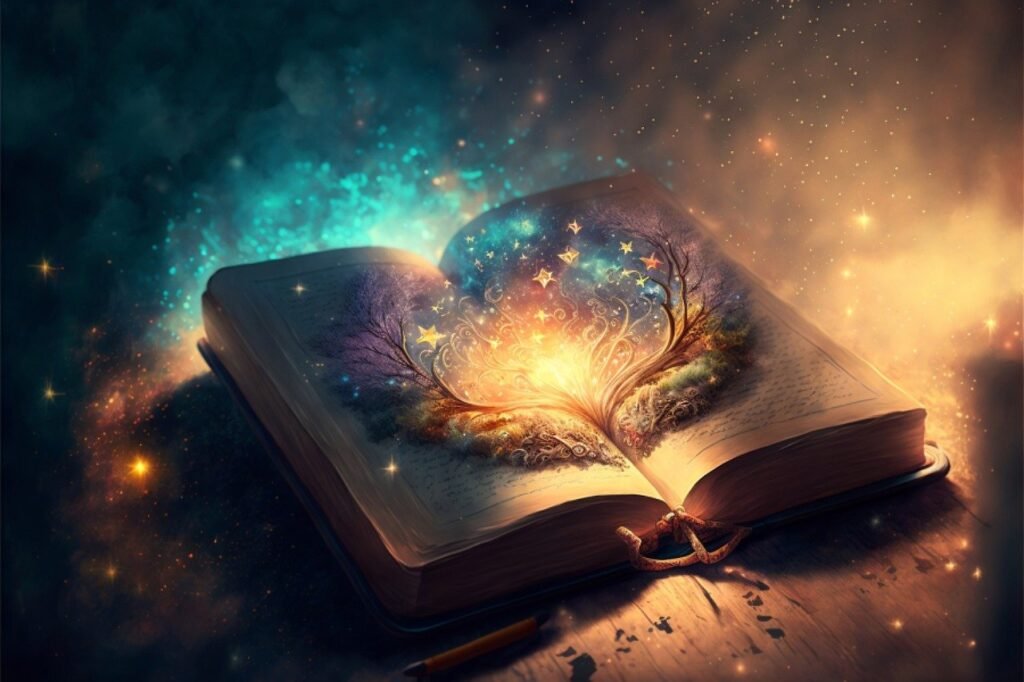Unveiling the Veil of Time: The Origin and History of the Law of Attraction
The Law of Attraction, a principle that asserts the power of thought in shaping one’s reality, has roots that extend deep into history, weaving through various cultures and philosophies.
Let’s embark on a journey through time, unveiling the origin and evolution of the Law of Attraction.
Ancient Wisdom:
While the term “Law of Attraction” may be relatively recent, the essence of its principles can be traced back to ancient civilizations. Ancient Hermetic philosophy, particularly the teachings found in the Hermeticism attributed to Hermes Trismegistus, explored the idea that like attracts like.
The Emerald Tablet, a key Hermetic text, contains the famous maxim, “As above, so below; as below, so above.“
Vedic Traditions:
In the Vedic traditions of ancient India, the concept of “Karma” is closely aligned with the Law of Attraction. Karma, in its essence, is the law of cause and effect—actions and intentions influencing one’s destiny.
The Bhagavad Gita, a sacred text of Hinduism, delves into the interconnectedness of thoughts, actions, and the unfolding of one’s life.
New Thought Movement:
The late 19th and early 20th centuries marked a period of significant development for the Law of Attraction with the emergence of the New Thought movement. Influential thinkers like Phineas Quimby, Mary Baker Eddy, and Emma Curtis Hopkins contributed to the idea that our thoughts and beliefs have a direct impact on our experiences.
The foundational principles of positive thinking, mental healing, and the power of the mind gained prominence during this era.
The Power of Positive Thinking:
Norman Vincent Peale’s groundbreaking book, “The Power of Positive Thinking,” published in 1952, further popularized the idea that maintaining a positive mindset could lead to success and happiness. Peale’s work, rooted in Christian theology and psychology, resonated with a wide audience and influenced the self-help genre.
“The Secret” Phenomenon:
The Law of Attraction gained mainstream attention in the 21st century with the release of the documentary film and subsequent book, “The Secret.” Released in 2006, “The Secret” featured various authors and speakers, including Rhonda Byrne, explaining the principles of the Law of Attraction.
The film claimed that thoughts could attract specific experiences into one’s life, unveiling the concept to a global audience.
Modern Resonance:
In the modern era, the Law of Attraction continues to be a pervasive force in personal development and spiritual circles. Authors like Louise Hay, Wayne Dyer, and Esther Hicks (channelling Abraham) have further contributed to its understanding and application.
The teachings have diversified to include concepts like visualization, affirmations, and the importance of aligning one’s energy with desired outcomes.
Criticism and Skepticism:
Despite its widespread popularity, the Law of Attraction has faced criticism and skepticism. Some argue that it oversimplifies the complexities of life and overlooks external factors that can influence outcomes. Sceptics often question the scientific basis of the law and its application in real-world scenarios.
Conclusion: A Timeless Tapestry
The Law of Attraction, although modern in its popularization, is woven into the fabric of human understanding and ancient wisdom. Its journey through time reveals a persistent human curiosity about the relationship between thought, belief, and reality.
As the tapestry of human knowledge continues to unfold, the Law of Attraction remains a fascinating and evolving exploration of the mind’s potential to shape our experiences and destinies.



